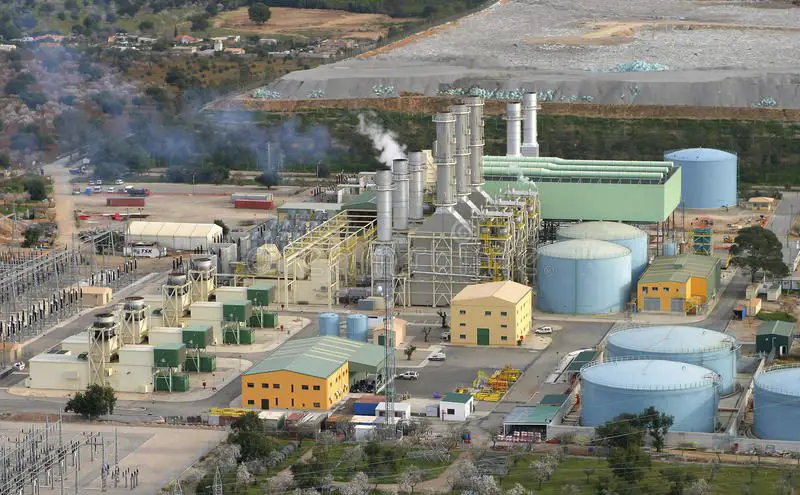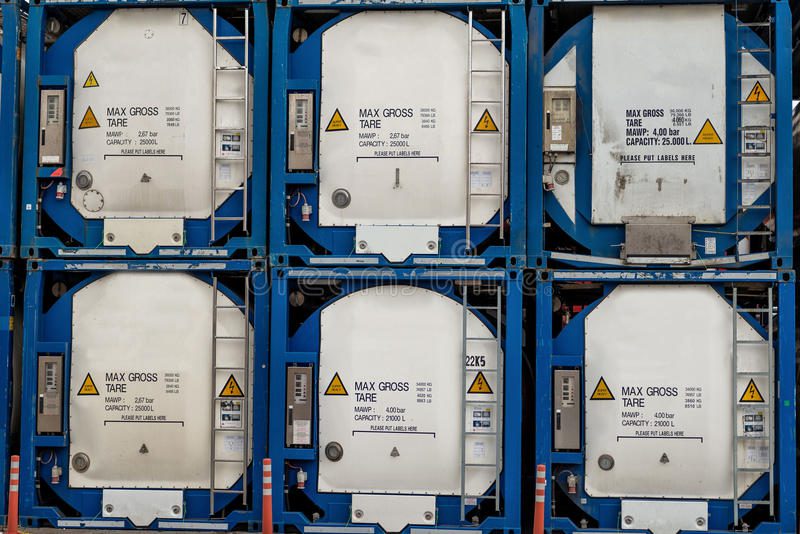Gaseous waste is a type of waste that exists in the form of gases, such as carbon dioxide, sulfur dioxide, and nitrogen oxides, among others. These gases are typically released into the atmosphere as a result of various human activities, such as industrial processes, transportation, and energy production.
Gaseous waste can have significant environmental impacts. For example, carbon dioxide is a greenhouse gas that contributes to global climate change, while sulfur dioxide and nitrogen oxides can lead to acid rain and other forms of pollution.
Controlling gaseous waste often requires the use of specialized technologies, such as emission control systems and carbon capture and storage. Additionally, efforts to reduce gaseous waste can include improving energy efficiency, promoting renewable energy sources, and implementing policies and regulations to limit emissions from various industries.
Ways To Generate Income From Gaseous Waste

There are several ways to generate income from gaseous waste. Some of the most common methods include:
(1) Biogas production
Biogas can be produced from organic waste such as food waste, agricultural waste, and sewage sludge. Biogas can be used as fuel for heating, cooking, and electricity generation. The biogas can be sold to power plants or used by industries to meet their energy needs.
Biogas production from gaseous waste can be a profitable source of income if managed efficiently. Biogas is a renewable energy source that is produced from the anaerobic digestion of organic waste materials, such as agricultural waste, food waste, and sewage sludge.
Biogas is composed mainly of methane and carbon dioxide and can be used as a fuel for heating, electricity generation, or transportation. The income from biogas production can come from several sources, including:
Selling the biogas: Biogas can be sold to utility companies or other consumers as a source of renewable energy. The price of biogas varies depending on the local market and the quality of the biogas produced.
Generating electricity: Biogas can be used to generate electricity through the use of a biogas generator or a combined heat and power (CHP) system. The electricity can be sold to the grid or used on-site to power the biogas production process or other equipment.
Heat production: Biogas can also be used as a source of heat for industrial processes or for space heating. The heat can be sold to other businesses or used on-site.
Carbon credits: Biogas production can also generate carbon credits that can be sold on the carbon market. Carbon credits are a type of tradable certificate that represents a reduction in greenhouse gas emissions.
However, it’s worth noting that the income from biogas production depends on various factors such as the efficiency of the production process, the cost of feedstock, the availability of government incentives and subsidies, and the cost of distribution and storage.
It’s important to conduct a feasibility study and a cost-benefit analysis before investing in biogas production to ensure that it is a profitable and sustainable business venture.
Read Also: The Production Derived From Gaseous Waste
(2) Carbon credits
Carbon credits can be earned by reducing greenhouse gas emissions. Companies that generate gaseous waste can earn carbon credits by implementing measures to reduce emissions. These credits can be sold to companies that need to offset their own emissions.
Carbon credits are a way to incentivize reducing greenhouse gas emissions. They represent a reduction in one metric tonne of carbon dioxide (or its equivalent) and can be traded on carbon markets. Carbon credits are typically generated through projects that reduce or avoid emissions, such as renewable energy or energy efficiency projects.
If you have a project that generates carbon credits from gaseous waste, you can earn income by selling those credits on a carbon market. The amount of income you can earn will depend on a variety of factors, such as the number of emissions you are reducing, the current market price of carbon credits, and the demand for credits.
To generate carbon credits from gaseous waste, you would typically need to capture the waste gas and either use it as an energy source (such as in a cogeneration plant) or store it (such as in a geological storage site). The emissions reductions generated by this project can then be quantified and verified by a third-party auditor, who will issue the carbon credits.
Once you have carbon credits, you can sell them on a carbon market. There are several carbon markets around the world, including the European Union Emissions Trading System (EU ETS), the California Carbon Market, and the Chicago Climate Exchange. The price of carbon credits can vary depending on the market and the demand for credits.
Income from carbon credits generated from gaseous waste can be earned by participating in carbon markets. The amount of income will depend on various factors, and the project must follow specific guidelines and undergo third-party verification to generate valid carbon credits.
(3) Waste-to-energy
Waste-to-energy technologies such as incineration and gasification can be used to convert gaseous waste into electricity. The electricity can be sold to the grid or used on-site to power operations.
Waste-to-energy (WTE) technologies are becoming increasingly popular as a means of generating energy from waste materials, including gaseous waste. In the case of gaseous waste, such as biogas or landfill gas, WTE technologies can be used to capture and convert the gas into a useful energy source.
The income potential from WTE technologies that convert gaseous waste into energy will depend on a number of factors, including the volume and quality of the waste gas, the efficiency of the WTE technology, and the market price for the energy produced.
In general, the income generated from WTE technologies can come from several sources, including the sale of electricity, the sale of heat or steam, and the sale of renewable energy credits. The specific revenue streams will depend on the type of WTE technology used and the local market conditions.
For example, biogas produced from organic waste can be used to generate electricity through the use of a biogas-fueled power plant. The electricity can then be sold to the local utility or directly to consumers. Additionally, the heat produced during the generation of electricity can be used for space heating or process heat, further increasing the income potential.
Another potential revenue stream for WTE technologies is the sale of renewable energy credits (RECs). RECs represent the environmental attributes of the energy produced from renewable sources and can be sold to utilities or other entities that are required to meet renewable energy standards or goals.
The income potential from WTE technologies that convert gaseous waste into energy can be significant, particularly if the waste gas is of high quality and the WTE technology is efficient and cost-effective. However, the specific income potential will depend on a number of factors and should be carefully evaluated on a case-by-case basis.
Read Also: Dog Waste Complete Management Guide
(4) Chemical synthesis
Some gaseous waste can be used in chemical synthesis to produce useful products such as methanol and hydrogen. These products can be sold to other industries or used to power operations.
Synthesizing chemicals from gaseous waste can potentially generate income through the production and sale of value-added products. This process involves converting waste gases into useful chemicals through various chemical reactions, such as catalytic conversion or fermentation.
One example of this is the conversion of carbon dioxide (CO2) into methanol (CH3OH) using a catalyst. Methanol is a valuable chemical that can be used as a fuel or as a feedstock for various chemical processes, such as the production of formaldehyde and acetic acid. The production and sale of methanol can generate income for companies involved in this process.
Another example is the use of waste gases from steel mills to produce ammonia (NH3), which is a key ingredient in the production of fertilizers. By utilizing these waste gases, companies can reduce their environmental impact while also generating income through the sale of ammonia.
The income potential from chemical synthesis from gaseous waste will depend on various factors such as the availability and quality of the waste gas, the cost and efficiency of the chemical conversion process, and the market demand and price for the resulting chemicals. However, this process presents a promising opportunity for companies to generate income while also reducing their environmental impact.
(5) Composting
Gaseous waste can be used as a feedstock for composting. The resulting compost can be sold as a soil amendment for agriculture and horticulture.
Composting gaseous waste can be a valuable source of income in certain situations. However, it is important to note that gaseous waste is not typically composted in the traditional sense. Instead, gaseous waste is usually processed using anaerobic digestion, which breaks down the organic material and produces biogas as a byproduct.
Biogas can be used as a renewable energy source, either on-site or sold to the grid. Depending on the quantity and quality of the biogas produced, it can be a significant source of income. Additionally, the residual digestate from the process can be used as a high-quality fertilizer, which can also generate income.
However, the income potential from composting gaseous waste will depend on several factors, such as the volume and quality of the waste, the efficiency of the anaerobic digestion process, the demand for renewable energy and fertilizer in the local market, and the availability of subsidies or incentives for renewable energy production. It is essential to conduct a thorough feasibility study to determine the economic viability of composting gaseous waste in a particular situation.
Overall, the key to generating income from gaseous waste is to find a way to turn it into a valuable resource. With the right technologies and strategies, gaseous waste can be turned into a profitable source of income for companies and communities.
Read Also: 5 Simple Habits to Improve Your Fitness and Health

